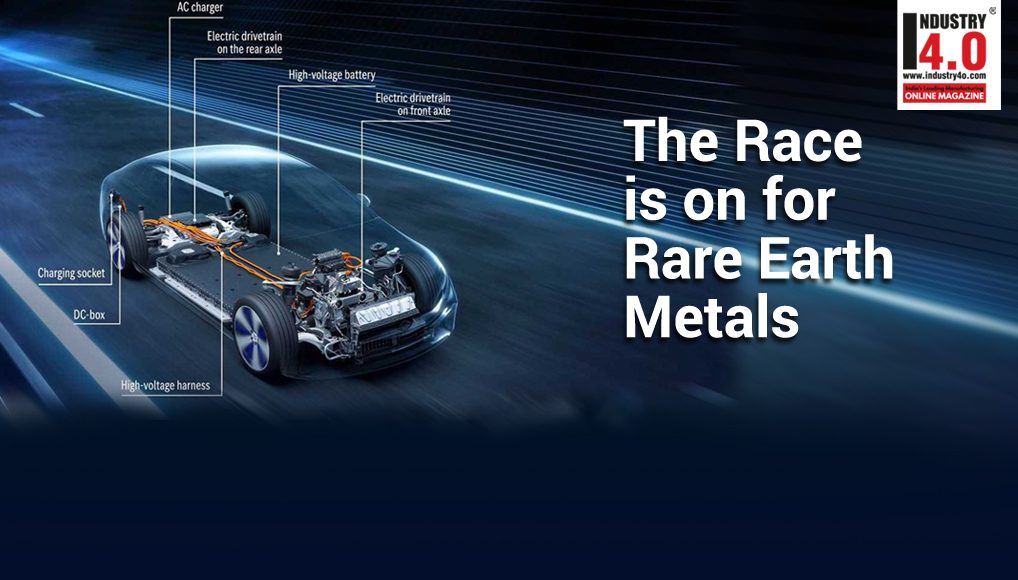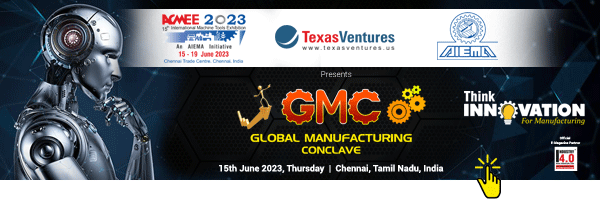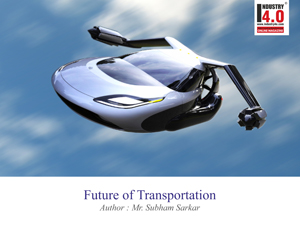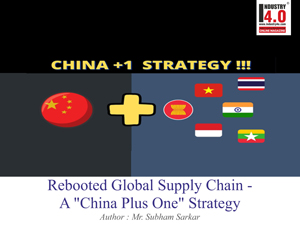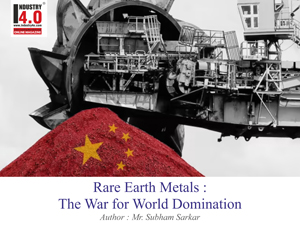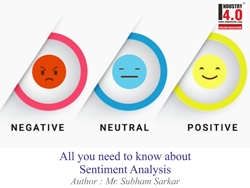Rare Earth Metals (Episode 2) – “The Race Is Very Much On!”
In my previous and first article on this topic (Rare Earth Metals – “The War for World Domination”, dated July 28, 2022), I had focused on how China was galloping away towards the winner’s podium of the Rare Earth Metals Race. For those who missed it or wants a refresher, here is the link : https://industry4o.com/2022/07/28/rare-earth-metals-the-war-for-world-domination/
In that article I had however also concluded that “It will be interesting to see how countries like the US, Russia, Japan, the EU, India, etc. (in isolation or in alliances) will play out their parts in this resource war. More on that, in another blog”.
Well, I felt it is time for a follow-on article to take stock on how the race has been shaping up over the past year. In this second episode of the series on Rare Earth Metals Race, I will be focusing on India – the proverbial elephant who seems to be waking up from a deep slumber, and maybe a bit groggy still?
An Alliance Was Indeed Born!
As part of the global ‘China-plus-one’ strategy adopted due to the massive supply-chain disruptions post the Covid-19 pandemic, a group of western nations initiated a cooperation to develop alternatives to China to ensure key industrial supplies. Last year around June 2022, a US-led partnership of 11 nations (the Minerals Security Partnership or MSP) – Australia, Canada, Finland, France, Germany, Japan, South Korea, Sweden, the UK, and the European Union – was created to form an alternate supply chain to counter China (having 70% share of global production) in Rare Earth Elements (REEs). A briefing note on the same was also released to the media by the US Department of State (https://www.state.gov/minerals-security-partnership/).
As per the MSP website, there are currently 31 member countries, 4 accession countries (including Chile) and 11 associate countries (including India and China). India is not yet a full member of this arrangement, but India is keen to be so.
The MSP grouping aims to bolster the supply chains of critical minerals such as cobalt, lithium, nickel, gallium, and 17 Rare Earth minerals.
Countering the Chinese Hegemony in Critical Minerals
According to the US Geological Survey, 38 per cent of world production of rare earth minerals in 1993 was in China, 33 per cent in the US, 12 per cent in Australia, and five per cent each in Malaysia and India. However, China accounted for more than 90 per cent of the world production of rare earth minerals in 2008. By 2011, China accounted for 97 per cent of world production of rare earth minerals! So much dependence on one country became alarming and sent shockwaves across the world capitals.
Chinese companies over the years have been making discreet investments in overseas assets in Chile, Indonesia, and Australia. Since 1990, supplies of rare earth minerals became an issue because the Chinese government began to change the amount of rare earth minerals it allows to be produced and exported, and also started limiting the number of Chinese and Sino-foreign joint venture companies that could export rare earth minerals from China. According to the International Energy Agency, complex supply chains could increase the risks that might arise from trade restrictions or other developments in major producing countries.
Hence the “China Plus One” strategy and the MSP. The MSP is aimed at reducing dependency on China for rare earth minerals, end its hegemony and pre-empt any chances of “critical minerals blackmail” (ala, nuclear blackmail!). To jog our memories, in 2019 China did make implicit threats to curb exports of rare earth metals to the US (and Japan), as were suggested by the Chinese state-owned media itself then!
Is India in the Race?
Though India has 6% (fifth-largest) of the world’s rare earth reserves, it only produces 1% of global output, and meets most of its requirements of such minerals from China!
India (like other countries) needs to mitigate the perilous over-dependence on China on a war footing. The applications of critical minerals (including the rare minerals set) are diverse and endless – mobile phones, computers, tablets, flat screen monitors, televisions, semiconductors, fibre-optic cables, electric vehicles, wind turbines, solar panels, stainless steel, rechargeable batteries, magnets, power grids, defence, aerospace, medical applications, and the list goes on.
Recently some good news has been making the headlines with regards to new discoveries. On Feb. 9, the GOI announced a discovery of an untapped 5.9-million-ton stash of lithium reserves located in the Reasi district of Jammu and Kashmir. This has led to renewed efforts to go after establishing commercial feasibility of the lithium reserves found between 2020 and February 2021 in Mandya district of Karnataka. Further, in April 2023, scientists at the CSIR-National Geophysical Research Institute (NGRI) discovered large deposits of Light Rare Earth Elements in Anantapur district of Andhra Pradesh. The elements include those in the lanthanide series including allanite, ceriate, thorite, columbite, tantalite, apatite, zircon, monazite, pyrochlore euxenite and fluorite.
However, the not so good news is that the resources found in India are of “significantly lean grade” as they have been found alongside radioactive elements, thus making their extraction long, complex and expensive. Heavy Rare Earth Elements have not yet been found in extractable quantities in India. Moreover, India unfortunately does not yet have the requisite technology, skills and resources for effective commercial extraction and processing/refining of such minerals!
How should India Play its Cards?
With the GOI’s renewed focus on Manufacturing (Make in India and Self-Reliant India/ Atmanirbhar Bharat), based on the relative importance of particular minerals to our industrial needs and the strategic assessment of supply risks, India needs to develop its own list of critical minerals and strategy for the same.
My sense is India wants to adopt a multi-modal / hybrid strategy to become a serious player in this global race, but at this point in time is yet to firm up a coherent strategy and an action plan with adequate budgetary outlays for the same (like it has already done with other initiatives/missions/sectors).
The Confederation of Indian Industry (CII) had suggested that such minerals should not be held captive to India’s civil nuclear programme alone. The industry body had further recommended that the public sector firm Indian Rare Earths Limited (IREL), administered by the Department of Atomic Energy (DAE), should be split into two entities. While IREL primarily focuses on Thorium and Uranium, CII had suggested that the second entity could pursue other critical minerals.
In layman terms, there are broadly 2 stages involved in successful mining and exploitation of critical and rare earth minerals:
Stage 1: Exploration-Discovery-Commercial Feasibility
For this India seems to be going the self-driven way at this time, with the Council of Scientific and Industrial Research (CSIR-India) project called SHORE (Shallow Subsurface Imaging of India for Resource Exploration) and the Deep Ocean Mission.
India can also leverage the expertise of friendly countries like Australia, Chile, Finland, Norway, US, amongst others. This apart from getting the required expertise (along with technology and knowledge transfers), will also help India explore & establish commercial feasibility faster and at scale.
Further (like China so successfully did), India can look at other countries for such critical mineral resources sourcing (buying, ownership though investments, etc.). Towards the same, the Ministry of Mines has created a Joint Venture company Khanij Bidesh India Ltd (KABIL) with participating interest of NALCO, HCL and MECL. KABIL has already shortlisted a select set of source countries with whom engagements are underway such as Australia, Argentina, Bolivia, Chile etc. for exploring possibilities of mineral asset acquisition abroad.
Stage 2: Extraction-Refining-Commercialisation
Here India definitely needs external help! Alliances and collaboration will be the fastest and most effective way to access the required expertise (through technology and knowledge transfers), till India builds its self-reliance capabilities.
For this, India is already working towards joining the multi-lateral MSP alliance as a priority. In parallel, exploring bilateral and multi-lateral collaborations can be another route.
A good example of the same is the Australia-India Critical Minerals Investment Partnership which is an investment partnership that is set to unlock mutual benefits for India and Australia from Australia’s world-leading critical minerals sector. In March 2022, the Australian Government allocated $5.8 million to the three-year Australia-India Critical Minerals Investment Partnership.
As part of this partnership, Australia will partner with India to supply critical minerals, export services and technology to process, refine, recover, and recycle critical minerals, help with mineral exploration in India, carry out joint research projects, and support India’s mining-related environmental management.
In Feb 2023, Norway’s Minister of Trade and Industry indicated that Norway will explore export of rare earth metals to India. Similarly, on April 3, 2023, Chile (home to the world’s largest Lithium reserves), said it is keen to partner with India in exploring the possibilities offered by the discovery of the estimated 5.9-million-tonne reserve of lithium in Jammu and Kashmir. Chile further said it is “willing” to engage in technology transfers and help India build up its industrial capacity in Lithium exploration so that the country can become a major player in the metal’s supply chain.
It is however intriguing that the US had kept India out from the MSP alliance! Why? is a loaded question that possibly has many answers, which I plan to elucidate in the next episode of this series! However, for its own interests, India (despite its Atmanirbhar Bharat / Self Reliant India push), should also work closely with the US, both on a bi-lateral basis through the Initiative on Critical and Emerging Technologies (iCET) and through multi-lateral forums like Indo-Pacific Economic Forum (IPEF) and the QUAD grouping, and also MSP (in future when India becomes a full member). End of the day, both countries cannot keep depending on China forever!
The Seven Imperatives for India
It makes sense for the GOI to set up an integrated ‘India Rare Earths Mission’ helmed and manned by professionals/technocrats (and not public sector bureaucrats) – like the India Semiconductor Mission, the India Stack, etc.
The Rare Earths Mission can be included as a key component of the over-arching Make in India & Self-Reliance India As part of that process, extending the Production Linked Incentive (PLI) concept to this sector will also encourage private players (both domestic and foreign collaborators) to mine such minerals.
Critical minerals exploration needs to be designated CSFs of the Deep Ocean Mission plan of the GOI. Similarly, ISRO needs to be mandated along with funding, to explore rare earth metals in space, like is being done by NASA and China.
Opening up the sector for private sector (including foreign) participation is the need of the hour. This may mean bringing in some much-needed and much-delayed reforms in the mining sector.
The country’s skill development programme needs a long-term plan executed in a mission mode to build internal expertise (both technology and process skills) in this emerging field. This should include revamping relevant professional education streams (like geology, applied sciences, mining & metallurgy, etc.) and institutes (Engineering Colleges, ITIs and Polytechnic Institutes). This is a classic case of irony wherein while there is huge demand for skilled professionals (employment opportunities) in this sector, but India does not have adequate skilled manpower supply for the same and unemployment is always a big issue for the country! This just cannot a Ministry of HRD mandate alone to tackle, the revamp should be done as part of the India Rare Earths Mission initiative, with more effective minds deployed on the job!
Leveraging collaborations and alliances (both bilateral and multi-lateral) to address current deficits, access tech and skills transfer, and scale faster. Mapping the MSP member countries and working on them consistently and in a target-oriented manner is the way to go!
Finally, India should not decouple from China (not in the near term for sure) in this key sector! Like its dependence on China for APIs for its Pharmaceutical sector, till the time there is a credible alternative formed based on its hybrid strategy of “self-reliance + alliances”, India has to do business (read import) and be dependent on China, till the India Rare Earths Mission starts delivering.
In my next article of this series (Episode 3), I plan to cover further developments in this sector which I will be tracking, with a focus on what the US has been planning and doing. Watch this space!
Banner image credit : www.huntingfishing.com
Disclaimer: The contents of this article are purely written in an individual capacity with data available in the public domain and based on the personal opinions of the author. Data sources and image credits have been cited duly as and where applicable.
About the Author :

Mr. Subham Sarkar
Chief Strategy Officer,
Netlabs Global IT Services,
Mr. Subham Sarkar is an experienced senior management and leadership professional in the IT services industry with close to three decades of running career working for IT services & startup firms. He is also on the Advisory Board of a few exciting early-and late-stage start ups.
Backed with a MBA and Engineering education background, he has a passion for keeping himself abreast of the macro economics and dynamics of the global economy, how geo-politics & economics and the ever evolving technology landscape is opening up newer possibilities for both enterprises and consumers.
From Mr. Subham Sarkar work experience he has assimilated what are the key business drivers of various industry types and how technology can be leveraged to conceptualize an executable long-term strategy for the growth of an IT services or a startup organization, while incubating, executing and mentoring these with the various stakeholders and teams.
Mr. Subham Sarkar basic goal in life is to be known and respected as a professional and a good human being in his sphere of influence – one who continuously strives for excellence, while contributing meaningfully to his profession, to the society he live in and most importantly his family.
Mr. Subham Sarkar interests are in Business Strategy, New & Emerging Technologies, Geo-Politics & Geo-Economics, Alliances & Partnerships, Articles & Blog Writing, Mentoring & NGOs, Personal Finance & Investments, Nature & Travel, Kishore Kumar Songs, Thriller & Mystery Movies, Cricket & Football, amongst others.
Mr. Subham Sarkar is Bestowed with the following Licenses & Certifications :
https://www.linkedin.com/in/su
Mr. Subham Sarkar can be Contacted at :
Mobile : +91-81476 52280
Also read Mr. Subham Sarkar‘s earlier articles:

